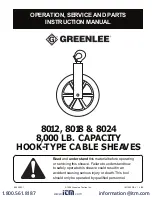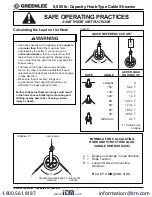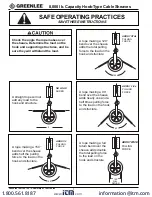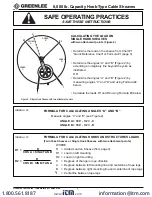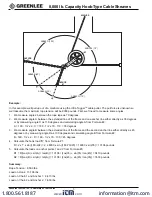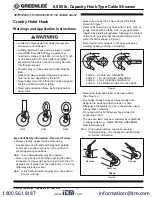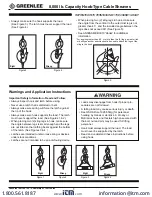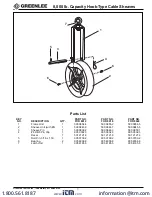
Greenlee Textron Inc. / Subsidiary of Textron Inc.
4
8,000 lb. Capacity Hook-Type Cable Sheaves
NO LOAD
ADDED
120
°
0
–
1
–
2
ADDS TOTAL
PULLING
FORCE
90
°
0
–
1
–
2
ADDS 1-1/2 x
PULLING
FORCE
0
–
1
–
2
0
°
ADDS 1/2
PULLING
FORCE
150
°
0
–
1
–
2
FULL
RETURN
0
–
1
–
2
180
°
ADDS TWICE
PULLING
FORCE
A rope making a 120
°
bend over the sheave
adds the total pulling
force to the load on the
hook and structure.
A rope making a 90
°
bend over the sheave
adds nearly one and a
half times pulling force
to the load on the hook
and structure.
A straight rope will not
add any load to the
hook and structure.
A rope making a 150
°
bend over the sheave
adds half the pulling
force to the load on the
hook and structure.
A rope making a full
return bend over the
sheave adds double
the total pulling force
to the load on the
hook and structure.
SAFE OPERATING PRACTICES
SAVE THESE INSTRUCTIONS
Check the angle the rope makes over
the sheave. Determine the load on the
hook and supporting structures, and be
sure they will withstand the load.
www.
.com
information@itm.com
1.800.561.8187

